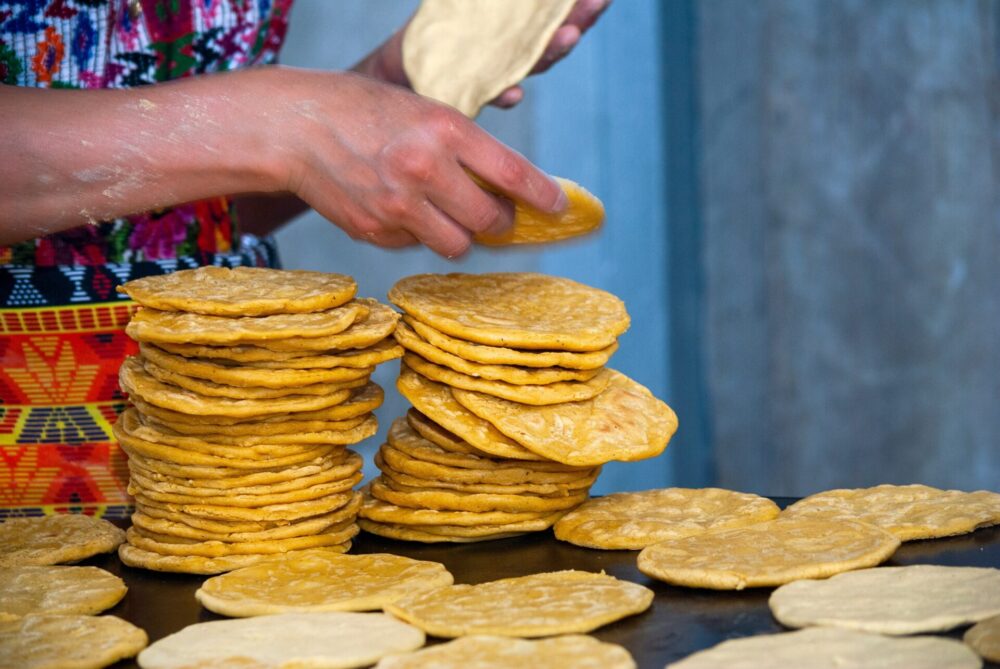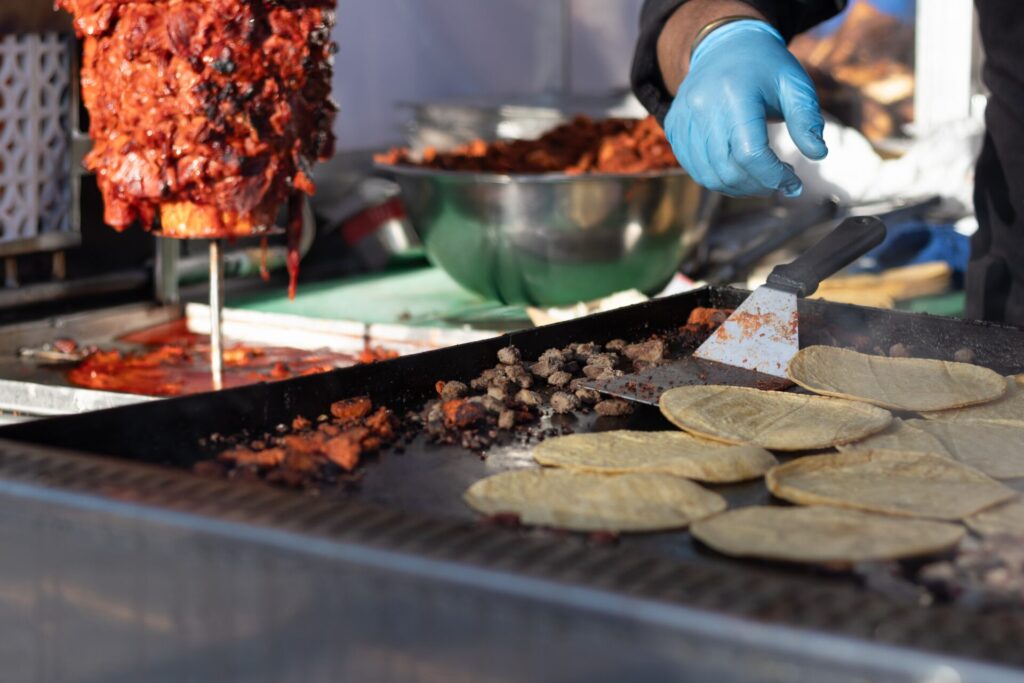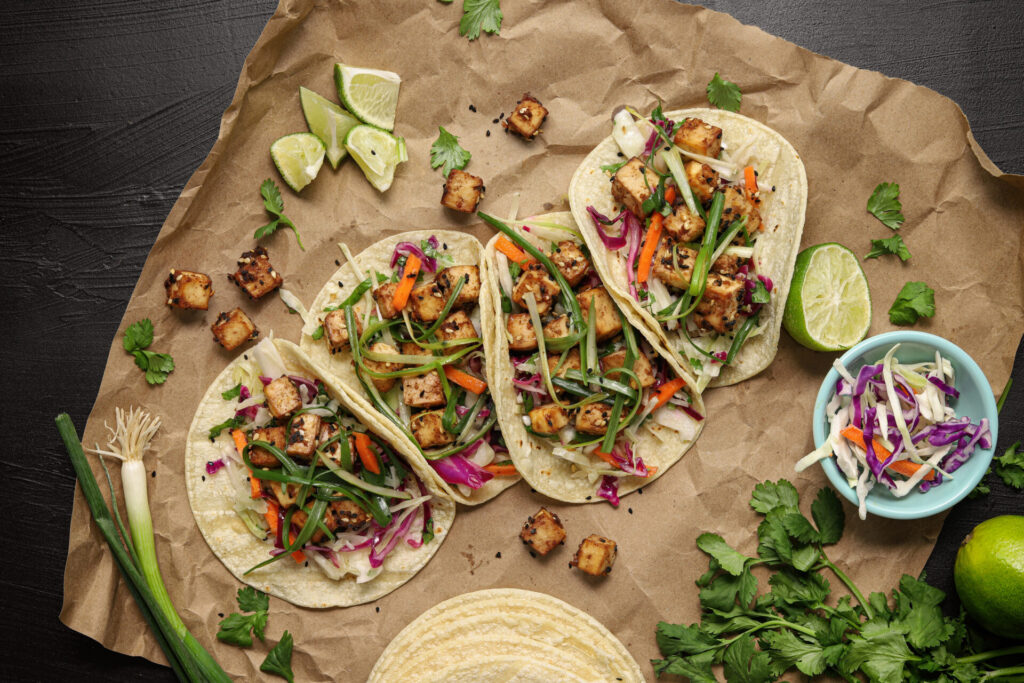
Before tacos were topped with salsa and cheese, they were simple, sacred, and essential. The story begins thousands of years ago in ancient Mesoamerica, where the Aztec and Mayan peoples cultivated maize (corn) the foundation of their diet and their culture.
Women ground maize by hand using a metate (a traditional stone grinder), mixed it into masa, and pressed it into warm, soft tortillas. These tortillas were used to scoop up meats, fish, beans, or vegetables creating the first versions of what we now call tacos.
In those early days were a way of life. Portable, nourishing, and communal.
Here’s the surprising part: the word taco didn’t originally refer to something edible. In the 18th century, Mexican silver miners used the term taco to describe small pieces of paper wrapped around gunpowder, used to blast open rock.
When you think about it, it fits perfectly both kinds of tacos are compact, powerful, and deliver a flavorful explosion! Over time, the term was adopted for the handheld food that packed a punch of flavor inside a tortilla.

Fast forward to the late 1800s: tacos were becoming a street food sensation in Mexico City. Women known as tacqueras sold them from small stands, serving locals on their way to work or after a long day.
Each region of Mexico developed its own unique taco tradition Tacos al Pastor with spit-roasted pork and pineapple in central Mexico, Baja Fish Tacos along the coast, and Birria Tacos in Jalisco.
Tacos became a reflection of Mexico itself vibrant, diverse, and endlessly creative.
Tacos made their way to the United States in the early 1900s through Mexican immigrants, especially in Texas and California. Initially, they were seen as street food for working-class communities flavorful, quick, and affordable.
By the mid-20th century, tacos began their American transformation. The crunchy shell, ground beef, lettuce, and cheese combo was popularized by fast-food chains like Taco Bell, bringing tacos to the mainstream.
Though some of these versions stray from traditional Mexican roots, they helped turn the taco into a national favorite and paved the way for the modern Taco Tuesday phenomenon.

Now, tacos have conquered the world. From Korean BBQ tacos in Los Angeles to vegan jackfruit tacos in London, every culture has found a way to make the taco their own.
But the heart of the taco remains the same simple ingredients, bold flavors, and the joy of sharing food together. Whether it’s a Tuesday tradition or a weekend craving, tacos remind us that some of the best things in life come wrapped in a tortilla.
The first taco ever documented was described by Spanish conquistador Bernardino de Sahagún in the 1500s, when he wrote about Aztec feasts.
Tacos al Pastor were inspired by Lebanese immigrants who brought shawarma-style cooking to Mexico in the 1920s.
The hard-shell taco gained fame in the U.S. in the 1950s, thanks to fast food innovation.
The phrase “Taco Tuesday” became popular in America in the 1980s and is now a nationwide weekly celebration of tacos, margaritas, and community.
From ancient fields of maize to global taco trucks, the taco’s journey is one of tradition, adaptation, and joy. Each taco, no matter where it’s from carries a story of people, culture, and the universal love of flavor.
So next Taco Tuesday, as you take that first delicious bite, remember you’re not just eating a taco… you’re tasting history.